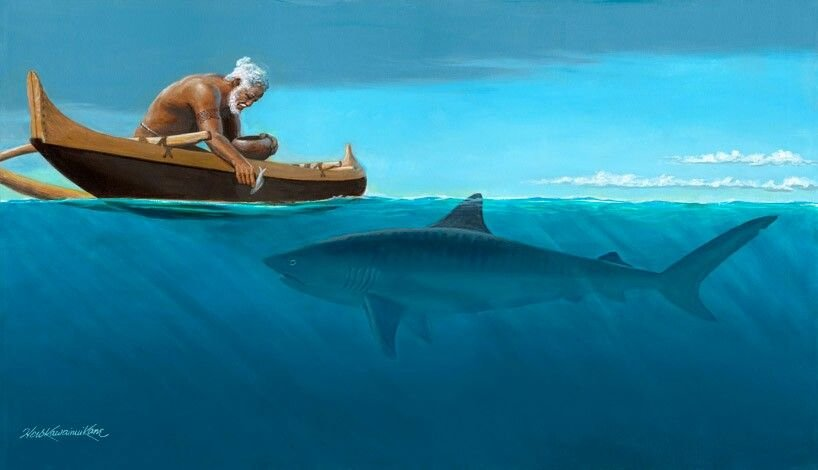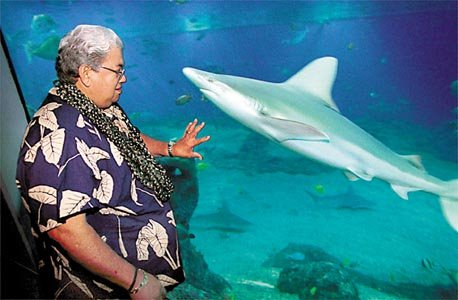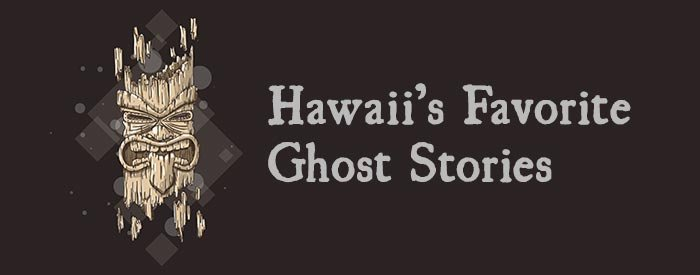Nā ʻaumākua a me Nā Lapu
- useduforce

- Mar 29, 2022
- 4 min read
In this post, I'll be sharing with you some info I've found on the ancient Hawaiian religion, regarding the topic of ghosts. The matter is a bit complex, so I've done my best to briefly sum it up in a way that makes sense! E nanea ʻoukou :)

Hawaiian gods could be divided into two broad categories: 1) those that were worshipped, and 2) those that were ghosts. Each category has many other specific sub-categories, but in this post we'll be focusing on two important types of ghost-gods, from the second category.
In general, when a person died, their spirit roamed the Earth until it found the path to the underworld: Pō, the land of King Milu. [Pō is the origin of the Hawaiian word "pō," meaning "night, darkness"]
ʻAumakua - household gods
If that spirit was worshipped by their living family (perhaps by some material possession they had owned in their lifetime), they would then be considered an ʻaumakua, or household/ancestral god. It's goal would then be not to look for the path to the underworld, but to abide around the home and protect its worshipping family.
As the guardian of the household, the duty of the ʻaumakua was simple: help the family by "providing them with good things" or by "punishing their enemies," including influencing weather patterns (bringing in the rain to benefit their crops, or destroying their enemies' with harsh winds, for example).
The ʻaumakua may appear in the form of an animal, like a manō (shark), a honu (turtle), or a pueo (owl), or even in the form of other natural objects, like plants or clouds. Part of worship included feeding and maintaining the animal/object.

Hawaiian kāne offers to his ʻaumakua, appearing him as a manō
Lapu - "Desolate / wandering" ghosts
If that dead person's spirit was not worshipped by their living family, it did not become an ʻaumakua. Instead, it was still left wandering the Earth in search for the underworld. These spirits were called Lapu, or desolate/wandering ghosts.
Unlike the ʻaumakua, lapu did not keep watch over any person or family, and they were not called to punish enemies. They did not have a home so generally did not stay in one place; instead, they would roam uninhabited areas, like the forest. These spirits are similar to what Westerners think of when we think of "ghosts" - wandering beings of the dead that can have visible bodies and talk to the living, but can also disappear or mysteriously fade away. They may be friendly, but it's best not to presume such a thought.
The lapu are among the (unfriendly) beings that Kaululāʻau encountered on the once-haunted island of Molokaʻi. For his story, visit blog post [coming soon] recounting this Hawaiian myth.

Kahu [Pastor] Charles Kauluwehi Maxwell, Sr. gets up close with his family’s ʻaumakua [article below]
Influences today
The Hawaiians abolished the kapu system in 1819, and, when missionaries arrived shortly after, condemned and outlawed old religious practices in favor of Christianity. Up to this point, the ancient Hawaiian religion and legends were passed down orally, as they had no system of writing - stories and traditions differed by era and by region/island. What we know about the beliefs of the wā kahiko (the "old times") is found in the few anthropological records from the 1800s and early 20th century. There's a decent amount of information, but ultimately beliefs in Hawaiian religion have largely moved on.
However, remnants of the old religion from the wā kahiko persist today in the form of culture.
Many Hawaiian people today adhere to the principle of the ʻaumakua, including the caring for and feeding of them. Again, this has become more of a cultural belief than a religious one, so some Hawaiians may simultaneously practice Christianity as well. This article is an interesting read for what Hawaiians believe today, regarding their ʻaumakua.
As for the lapu: some believe, while others are more skeptical, that ghosts wander the Hawaiian Islands. Further, there are still talks and fears of Night Marchers (Huaka'i pō) that resemble this mythical creature. See this blog post [coming soon] for information on that!
Pau!
I hope you enjoyed this post :) Again, what any one person thought at any given time before the kapu was abolished is hard to find. There are multiple versions of the same story, either for myths or for general beliefs like the ʻaumakua and the lapu. Still, if you have any questions, I'll do my best to answer! A hui hou :)
Hua 'ōlelo:
- Pō = Night, darkness; the underworld
- Manō = Shark
- Honu = Turtle
- Pueo = Owl
- Wā = Time, era
- Kahiko = Old, ancient
Sources:
- [book] Hawaiian Mythology by Martha Beckwith; p 105, p 122
- Legends of Gods and Ghosts by William Drake Westervelt [Ctrl + F "HOMELESS AND DESOLATE GHOSTS"]
- Ka Nūpepa Kuokoa, Ancient Worship, Number 9; Section: The Belief of the People of Old about the Activities of the Gods of the Night [p 77; PDF p 11]
- Classical Hawaiian Education by John Charlot; Section "Hawaiian Views of Education" [p 89; PDF p 123]



Comments